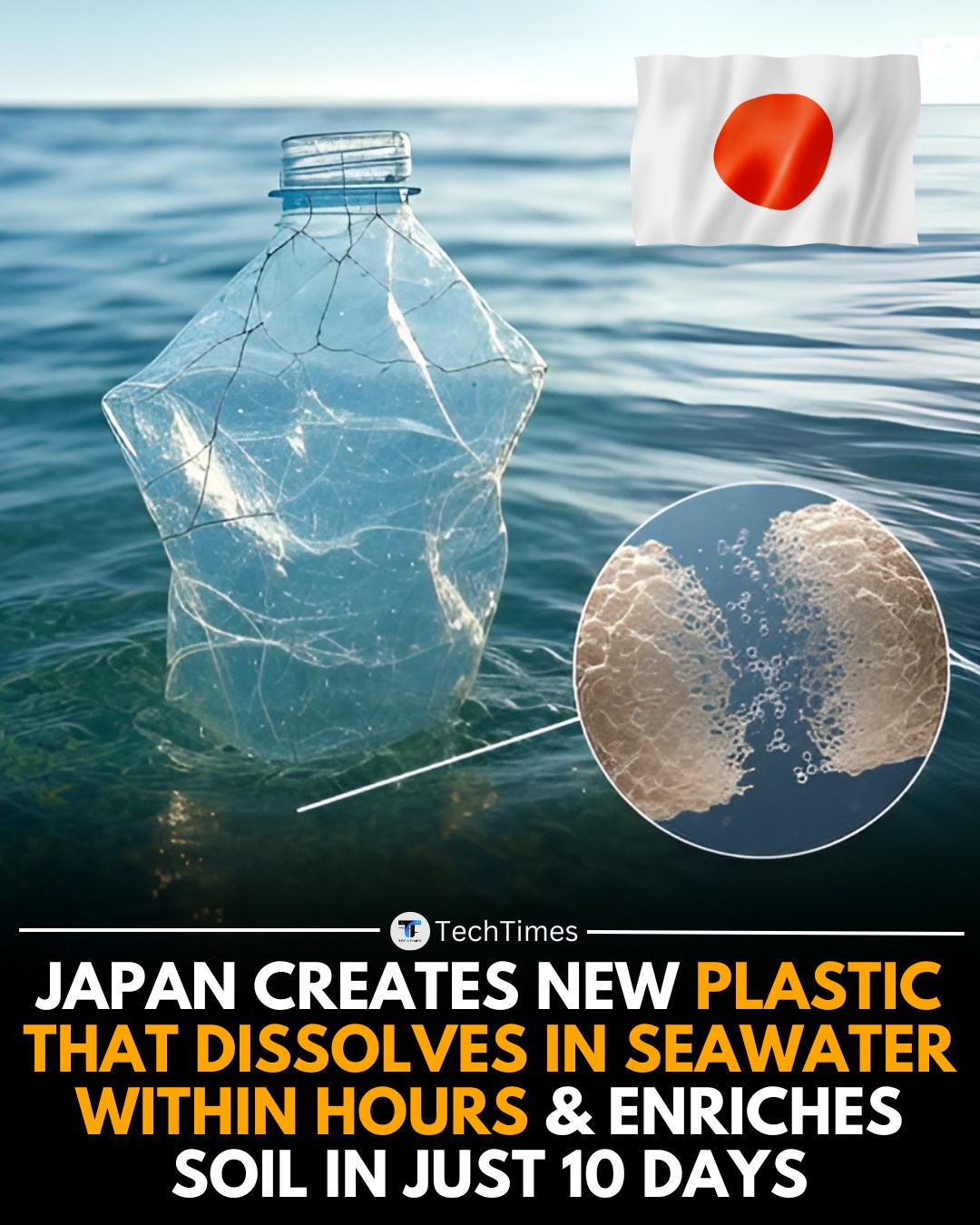In a world-first innovation, scientists at RIKEN and the University of Tokyo have created a new type of plastic that completely dissolves in seawater within hours and fertilizes soil within 10 days.
Led by Dr. Takashi Nishikawa, the team crafted the material using sodium hexametaphosphate and guanidinium-based monomers—ensuring it’s not only biodegradable, but also nutrient-rich, releasing phosphorus and nitrogen to enhance soil health.
No microplastics
Non-toxic to marine life
91% recyclable
Ideal for farming mulch, fishnets, and eco-packaging
This is more than plastic — it’s a living material designed to vanish cleanly and give back to the planet.
#JapanInnovation #BiodegradablePlastic #GreenTech #PlasticPollution #OceanSafe
Led by Dr. Takashi Nishikawa, the team crafted the material using sodium hexametaphosphate and guanidinium-based monomers—ensuring it’s not only biodegradable, but also nutrient-rich, releasing phosphorus and nitrogen to enhance soil health.
No microplastics
Non-toxic to marine life
91% recyclable
Ideal for farming mulch, fishnets, and eco-packaging
This is more than plastic — it’s a living material designed to vanish cleanly and give back to the planet.
#JapanInnovation #BiodegradablePlastic #GreenTech #PlasticPollution #OceanSafe
In a world-first innovation, scientists at RIKEN and the University of Tokyo have created a new type of plastic that completely dissolves in seawater within hours and fertilizes soil within 10 days.
Led by Dr. Takashi Nishikawa, the team crafted the material using sodium hexametaphosphate and guanidinium-based monomers—ensuring it’s not only biodegradable, but also nutrient-rich, releasing phosphorus and nitrogen to enhance soil health.
No microplastics
Non-toxic to marine life
91% recyclable
Ideal for farming mulch, fishnets, and eco-packaging
This is more than plastic — it’s a living material designed to vanish cleanly and give back to the planet.
#JapanInnovation #BiodegradablePlastic #GreenTech #PlasticPollution #OceanSafe






